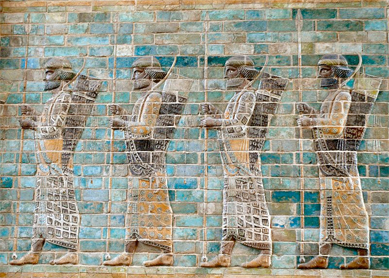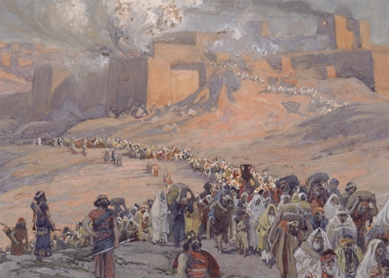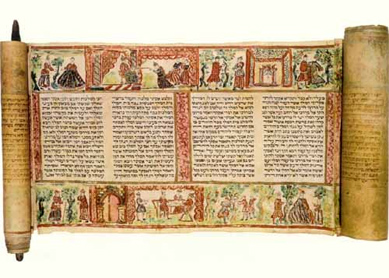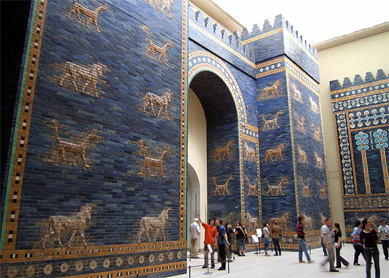Yahweh was the primary deity worshipped in ancient Israel. According to the Hebrew Bible, Judeans in the diaspora continued to worship Yahweh during the Persian period (ca. 550–330 BCE). However, extrabiblical sources draw an image of Judean religion that differs from and revises the impression created by the Hebrew Bible.
What evidence in the Hebrew Bible is there for the worship of Yahweh outside the Persian province Yehud?
The Hebrew Bible provides limited evidence for religious life in the Judean diaspora. For example,
What archeological and extrabiblical sources are there for the worship of Yahweh outside the Persian province Yehud, and what do they tell?
Like the Hebrew Bible, documents and inscriptions revealed through excavations have to be interpreted critically. Nevertheless, many scholars hold them to have a higher value than the biblical texts for the reconstruction of the history of Judean religion. Two sets of documents are particularly important for the Persian period.
First, various documents dating to the late Babylonian and early Persian periods have been published over the last few years that depict life in settlements such as Āl-Yāḫūdu (“Judah-town”) in Babylonia. They show that many Judean deportees lived together. Many of the Judean personal names were Yahwistic; that is, they are names that include Yahweh as a component (e.g., Zakar-Yāma, a name that corresponds to biblical Zechariah, “Yah[weh] has remembered”). It is noteworthy that Judeans could also have names composed with the names of other deities (e.g., Nabû-aḫ-uṣur, “Nabu, guard the brother!”). Personal names were hardly devoid of religious significance.
Second, documents from Elephantine, an island in the Nile on Egypt’s southern border, give insights into the religious practice of the Judean garrison there. The Judeans were in the service of the Persian colonial rule of Egypt. They had a temple for Yahweh (whom they called Yahu or Yaho, and the God of heaven) during most of the fifth century BCE. Archeologists have probably identified remains of it. They had temple personnel in Elephantine, even though they were aware of the Jerusalem priesthood. They offered sacrifices to Yahu and celebrated Passover, although the records do not connect this to the Exodus narrative. In the Elephantine records, there are no traces of biblical texts. Moreover, the Judeans in Elephantine knew about the Sabbath, but they did not observe it as a day with taboos like abstaining from work. There are no traces of any Sabbath commandment in the Elephantine documents (compare
Finally, some documents suggest that Yahu was part of a larger Elephantine-Judean pantheon. Although the relationship and hierarchy of the pantheon members remain uncertain, some of the deities mentioned include Yahu, Eshembethel, Anathbethel, Anath-Yahu, Ḥerem, and Ḥerembethel. Monotheism was not the norm.
Worship in Elephantine and other locations differed from what we find in the Hebrew Bible. The difference indicates that the Israelite religion was still very much in flux during the Persian period. The main ideas that constitute the laws and practices of the final form of the Hebrew Bible were either not yet widely known or not widely practiced. However, it is clear is that throughout the diaspora, Yahweh was the main god of the Judean exiles.
Bibliography
- Toorn, Karel van der. Becoming Diaspora Jews: Behind the Story of Elephantine. Anchor Yale Bible Reference Library. New Haven, CT: Yale University Press, 2019.
- Granerød, Gard. Dimensions of Yahwism in the Persian Period: Studies in the Religion and Society of the Judaean Community at Elephantine. Beihefte zur Zeitschrift für die alttestamentliche Wissenschaft 488. Berlin: de Gruyter, 2016.
- Becking, Bob. 2020. Identity in Persian Egypt: The Fate of the Yehudite Community of Elephantine. University Park, PA: Eisenbrauns.
- Granerød, Gard. “YHW the God of Heaven: An interpretatio persica et aegyptiaca of YHW in Elephantine.” Journal for the Study of Judaism 52 (2021): 1–26.
- Granerød, Gard. “Canon and Archive: Yahwism in Elephantine and Āl-Yāḫūdu as a Challenge to the Canonical History of Judean Religion in the Persian Period.” Journal of Biblical Literature 138 (2019): 345–64.





